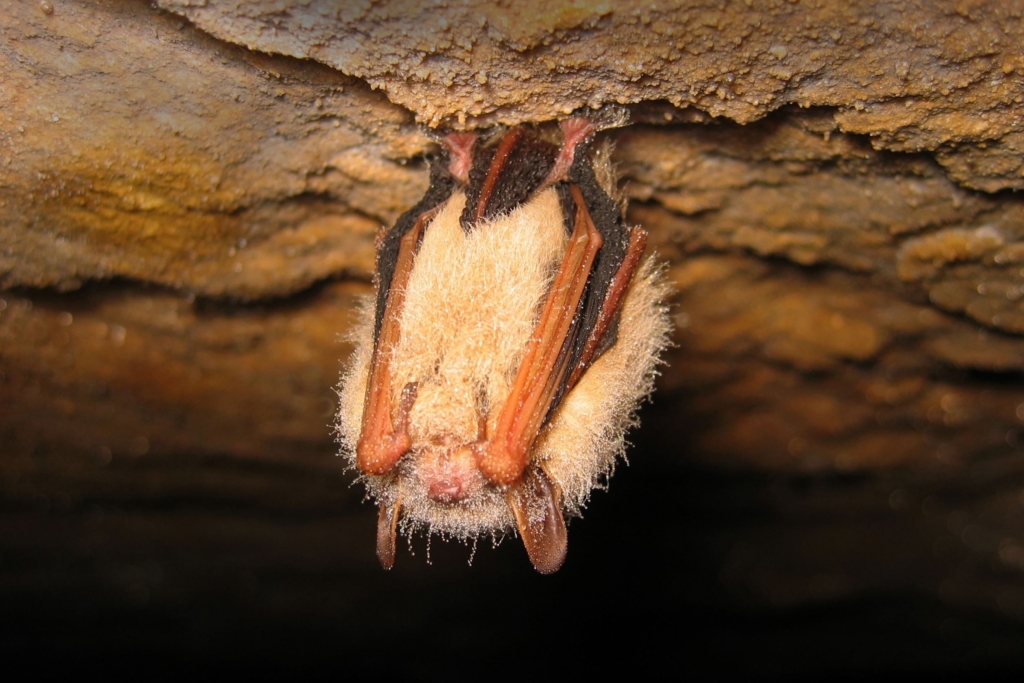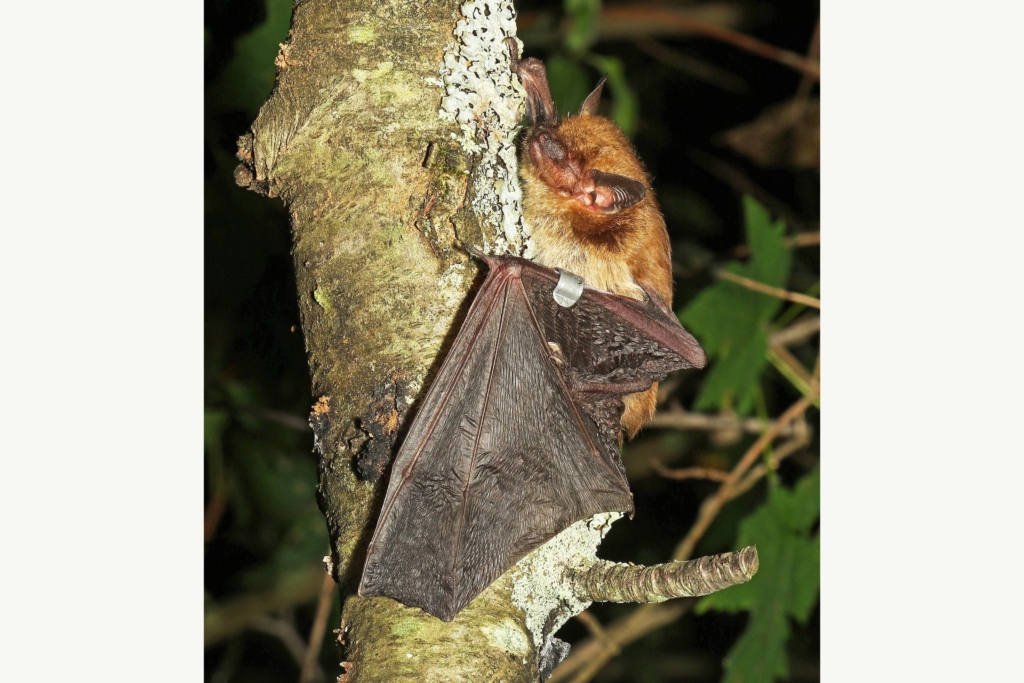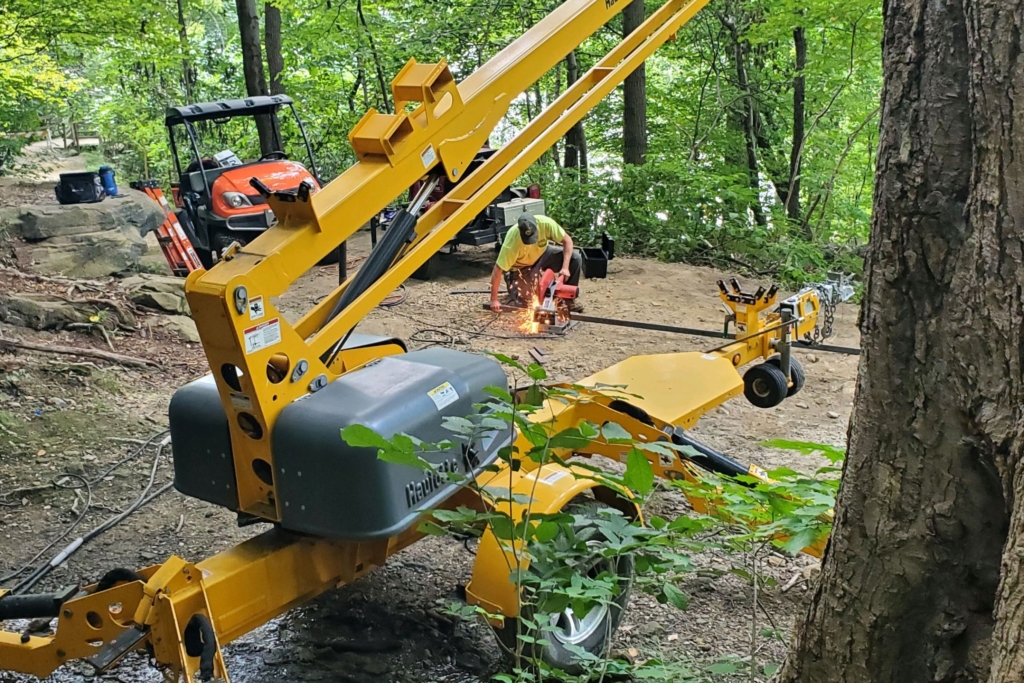You may notice Bierce Cave, near Old Maid’s Kitchen in Gorge Metro Park, received a new look last summer. Previously bricked up in 1968 after a teenager got stuck and had to be helped out by the fire department, Bierce Cave is now gated. Gates are put in place most often to protect what is inside them, but they also afford safety to people who may be curious to explore. In this case, the gate was installed to protect sensitive bats.

Using other, smaller access points, bats have been using this cave to hibernate for many decades. All Ohio bats are insectivores, feasting on night-flying insects during the warm months of the year. Throughout the remainder of the year, bats must seek refuge from the cold weather and lack of food resources by sleeping their days away in caves or other quiet, sheltered places while sustained by their fat reserves.

Recently, big brown and tricolored bats have been using Bierce Cave for hibernation. They are Ohio endangered species. Both species were more common before the arrival of white-nose syndrome (WNS), a fungus that causes bats to become very sick and die during the winter hibernation period. Native to Europe, this fungus thrives in caves and was discovered in Summit County in 2011.
The initial spread of the invasive fungus killed millions of bats throughout the United States and is still affecting bat species all over the continent. More recently, researchers have discovered that bats who survive their first exposure to WNS have quickly adapted to resist the disease. Particularly, bats are gaining more weight before hibernation and are behaving differently during hibernation, allowing them to avoid succumbing to the deadly disease. This is very good news for many types of bats who saw steep population declines across their ranges, like little brown bats, also Summit County residents.
Even with resistance to WNS, some bat species are still in danger of extinction, including the tricolored bat. Recently, the United States Fish and Wildlife Service recommended the tricolored bat be listed as a federally endangered species. This means data shows the tricolored bat is at very high risk of becoming extinct in the wild. Like many of our bat species, tricolored bats have one pup per year, eat insects, rely on forests in the summer for raising and feeding their young, and require caves for hibernation in the winter.

Summit Metro Parks biologists have been studying and helping bats for 20 years. We recommended Bierce Cave be gated to protect tricolored bats during their hibernation. Because the cave has experienced vandalism and encroachment in recent years, the new gate makes it safer for bats and people.
The park district’s conservation and operations departments worked together to establish the Bierce Cave gate. It took two crew members about a week to construct the custom gate onsite at the Gorge, but it wasn’t their first rodeo. Liberty Park also has bat gates, designed and built by park staff, that protect hibernating bats including little, big and tricolored bats, as well as the federally threatened northern long-eared and federally endangered Indiana bats.

Protecting bats during hibernation isn’t the only way to help them, and you can join us in our efforts to protect these amazing flying mammals. Citizen scientists count mom and baby bats in summer colonies in barns, attics and bat houses to monitor population trends of bats throughout Ohio. If you have bats in a structure at home, you can participate by including your data in the Ohio Bat Roost Monitoring Project through the Ohio Division of Wildlife.
Another incredibly important step you can take to help bats is to use native plants in your landscaping. Native plants attract and sustain insect populations better than non-natives species, and as you know, our bats exclusively eat bugs. Utilizing native plants can benefit bats and other wildlife in a big way. Birds, bees and insects such as butterflies also benefit greatly from native plants. These plants are drought resistant, tolerant to our climate and beautiful.
Visit our website to learn more about native plants and view a list of upcoming educational programs and events. Visit Bat Conservation International to learn more about bats. Remember, bats are our friends!
For more stories like this, check out Green Islands magazine, a bi-monthly publication from Summit Metro Parks. Summit County residents can sign up to receive the publication at home free of charge.